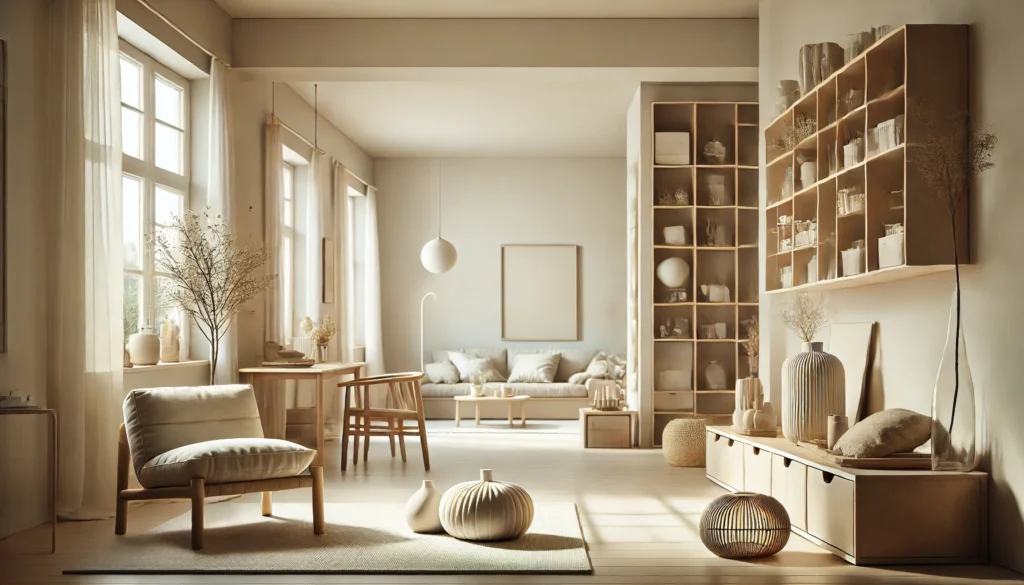Minimalism isn’t about living with nothing. It’s about living with what truly matters. Practical minimalism takes the core ideas of the lifestyle and turns them into real, doable actions — no extremes, just real change.
Whether you’re curious about simplifying or already started decluttering, this guide will help you embrace practical minimalism in your daily life so you can live better with less.
What Is Practical Minimalism?
At its heart, practical minimalism means simplifying your life in a way that works for you. It’s not about throwing everything away or living in a tiny house with three shirts.
It’s about:
- Choosing quality over quantity
- Letting go of things that don’t serve you
- Being intentional about your space, time, and energy
Practical minimalism fits into your real life — even if you have a family, a job, or a busy schedule.
Why Practical Minimalism Works
Let’s face it: life is noisy, cluttered, and fast-paced. Most of us don’t need more things — we need more space, mentally and physically.
Here’s what practical minimalism can help you achieve:
- More time — Less stuff = less cleaning, shopping, and decision-making
- Less stress — A calm space leads to a calm mind
- Better focus — You can concentrate on what matters
- More money — Buying less means saving more
- Greater joy — You’ll enjoy what you keep even more
Step 1: Declutter by Category, Not by Room
One of the most practical ways to start is to declutter by category, not by space. For example:
- Clothes
- Books
- Kitchenware
- Electronics
- Decorations
- Paperwork
This keeps you focused and prevents you from bouncing around aimlessly.
Tip: Start with something easy, like your socks or accessories. Small wins build momentum.
Step 2: Apply the “One-Year Rule”
Ask yourself:
Have I used this in the last year? Will I use it in the next year?
If not, it might be time to let it go. This simple rule helps you be honest with yourself without overthinking every item.
Step 3: Create Zones of Simplicity
Not ready to simplify your whole life? No problem. Create zones where minimalism rules apply.
Examples:
- Your desk
- Your nightstand
- Your closet
- Your bathroom counter
Keeping even just one area tidy and intentional can have a huge mental impact.
Step 4: Be Mindful About What Comes In
Minimalism isn’t just about what you remove — it’s about what you don’t bring in.
Before buying or accepting anything, ask:
- Do I need this?
- Do I already have something similar?
- Will I still want this in a month?
Impulse buys are one of the biggest enemies of minimalism.
Step 5: Opt for Multi-Use and Quality Items
One great minimalist trick is to invest in fewer, better things. Choose items that serve multiple purposes and are built to last.
For example:
- A cast iron pan instead of five non-stick ones
- A neutral coat that goes with anything
- A quality notebook over stacks of random notepads
These items reduce clutter and increase satisfaction.
Step 6: Apply Minimalism to Your Calendar
Your time is just as valuable as your space. Don’t overcommit.
- Limit unnecessary meetings
- Block time for rest and creativity
- Say “no” to things that don’t align with your priorities
- Schedule buffer time between tasks
Empty space in your calendar is not laziness — it’s peace.
Step 7: Go Digital with Intention
Digital clutter can be just as overwhelming as physical clutter. Here’s how to simplify:
- Organize your files and photos
- Unsubscribe from emails you don’t read
- Delete unused apps
- Set boundaries with screen time
- Use minimalist wallpapers and quiet phone settings
Your digital life deserves simplicity, too.
Step 8: Make It Family-Friendly
Yes — minimalism works with kids, roommates, or partners. The secret is to lead by example, not force change.
- Create shared zones of calm
- Involve others in decluttering sessions
- Focus on experiences instead of gifts
- Be patient — everyone has their own pace
Minimalism is more contagious than you think.
Step 9: Celebrate What You Keep
Minimalism doesn’t mean empty or boring. It means choosing what brings value.
Display items you truly love. Make space feel inviting and personal. Appreciate the quiet beauty of fewer things — a framed photo, a handmade mug, a plant.
Intentionality turns ordinary things into treasures.
Step 10: Keep It Flexible
Life changes. Minimalism is not a strict set of rules — it’s a mindset.
Some seasons you’ll need more, others less. Adjust as needed. What matters is staying in tune with your values and comfort.
There’s no perfect minimalist — only a better version of you.
A Simpler Life, One Step at a Time
Practical minimalism is about freedom — freedom from clutter, from stress, and from overwhelm. You don’t need to become a minimalist overnight. You just need to begin.
Start small. Go gently. And with each item, task, or commitment you let go of, you’ll find yourself closer to what really matters.
You don’t need more — you need less of what doesn’t serve you.

